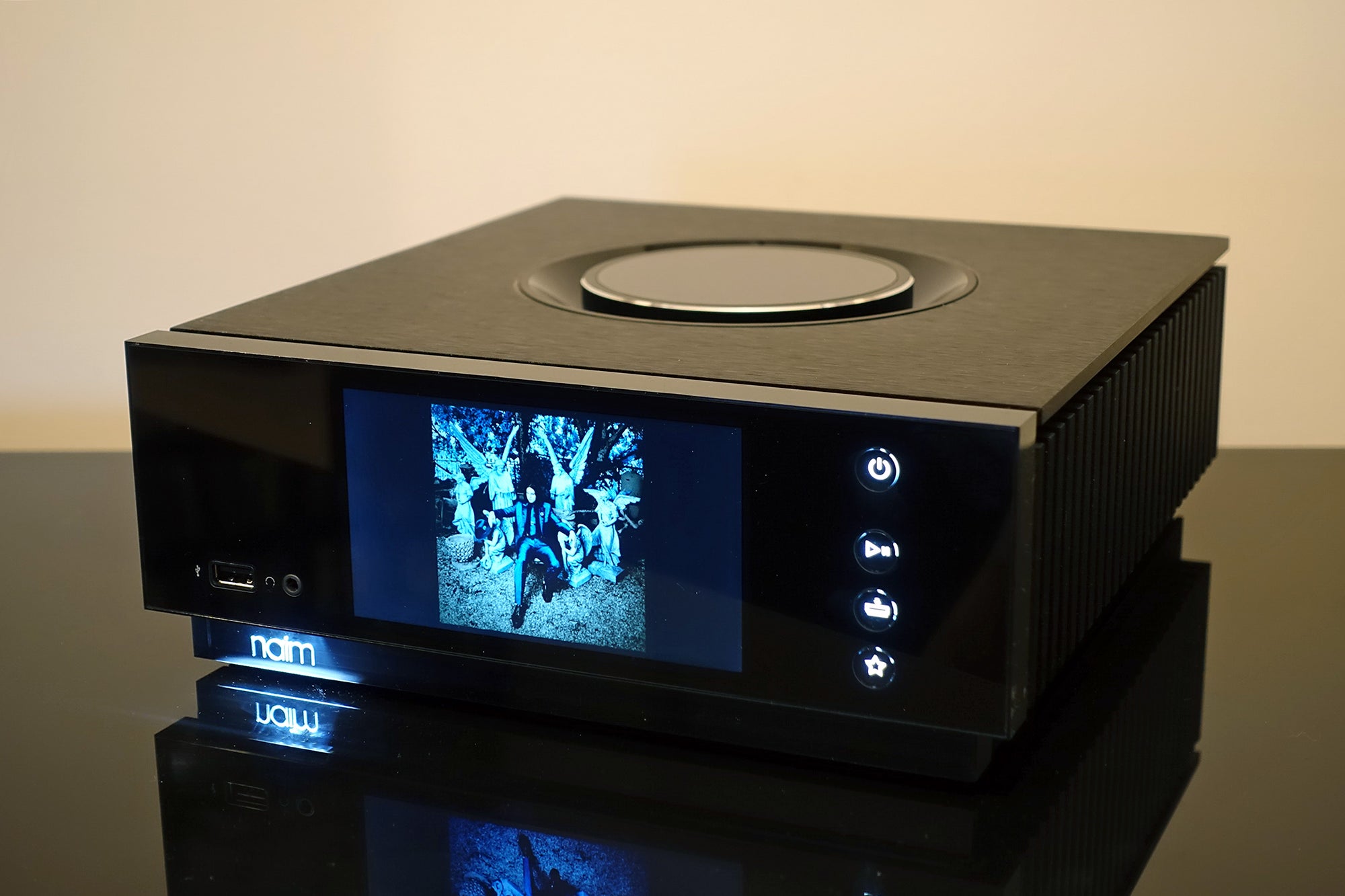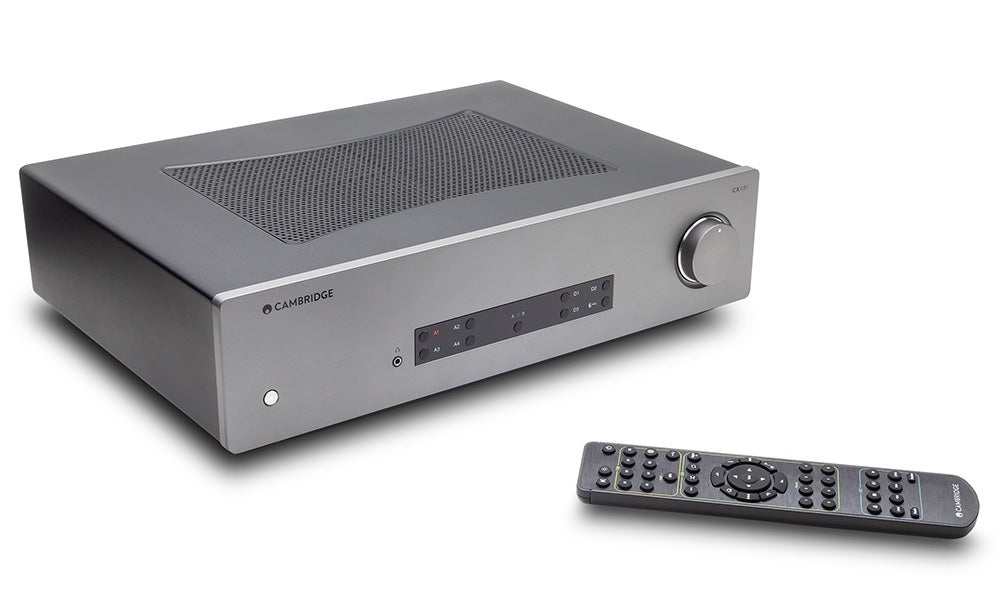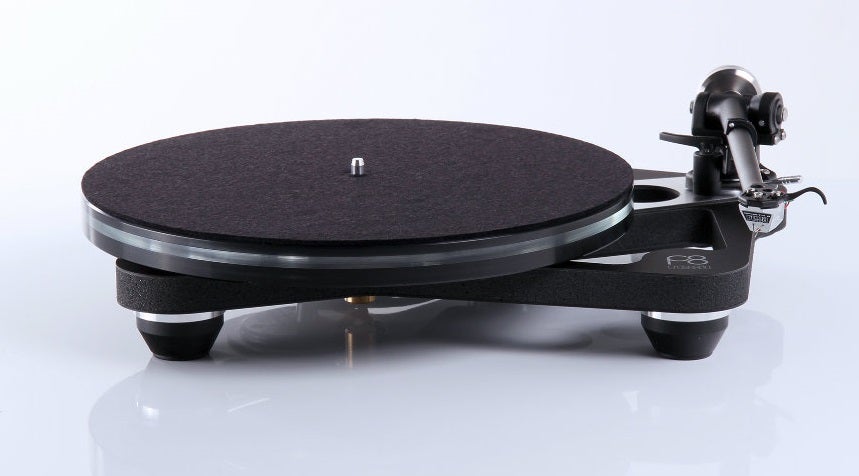FiiO M17 Review
Hey Google, define the word portable
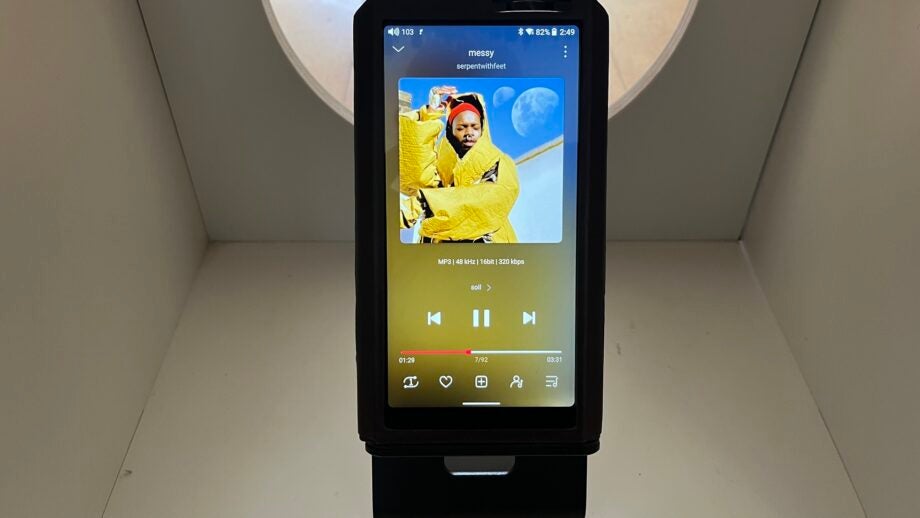

Verdict
Yes, it’s expensive and unwieldy – but the FiiO M17 is a great source of music, an excellent desktop DAC and amplifier and a straightforward pleasure to listen to in any circumstance.
Pros
- Always sounds accomplished and entertaining
- Built to last, and if anything, overspecified
- Will bring out the best in any of your headphones
Cons
- Bigger and heavier than you might expect
- Deserves equally impressive headphones
- Not without competition
Key Features
- DAC2 x ESS Sabre ES9038PRO eight-channel DAC
- AmplifierTHX AAA 788+ amplifier
- Inputs2.5mm, 3.5mm, 4.4mm and 6.3mm headphone outputs
Introduction
Be warned: the word big is going to be appearing more than somewhat during the course of this review. The FiiO M17 is, by the standards of portable music players, big in every respect: size, spec and price.
Of course, what that big price rather insists upon is a big performance. Being pricey, lavishly specified and hefty enough to (in the words of Laurie Anderson) stun an ox is all well and good. But ultimately, it’s performance we’re interested in here. Does the FiiO M17 have it where it counts? Or is it all (big) mouth and trousers?
Availability
- UKRRP: £1499
- USARRP: $1799
- EuropeTBC
- CanadaTBC
- AustraliaRRP: AU$2799
In the UK, the FiiO M17 portable music player will set you back £1,499. It sells for $1,799 in the US and for AU$2,699 in Australia.
It almost goes without saying that this is quite big money for a portable music player. Still, the M17 is by no means the priciest around – the Astell and Kern Aultima SP2000T I reviewed at the end of last year goes for £1,999, and it’s not even A&K’s most expensive model. Nevertheless, it’s fair to say the M17’s asking price has raised expectations around here.
Design
- 156x89x28mm
- 610g
- 1080×2160 touchscreen
The word portable, as it’s usually understood to apply to digital audio players, is a purely relative term here. Yes, the M17 can be picked up in one hand and easily taken from place to place. But by prevailing standards, it’s big and heavy – and it basically demands a backpack or other bag as a means of transportation because no one will have a pocket big or robust enough to contain it.
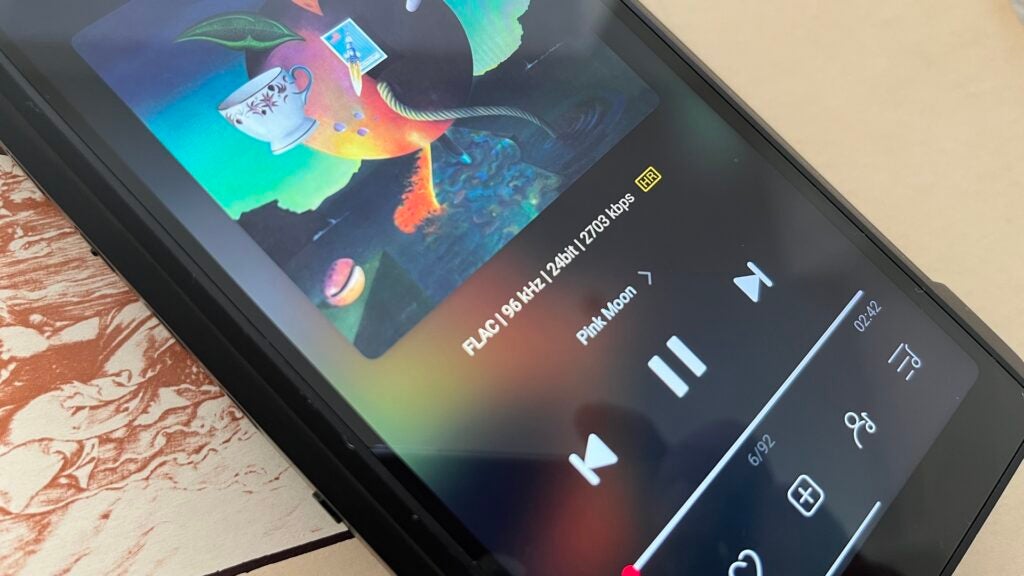
Mind you, the fact that this player’s aluminium CNC-finished unibody is so extensive means it can be fitted with a nice big screen. Both its front and rear are made of glass, but the front is a 6-inch touchscreen with an 18:9 aspect ratio and 1080×2160 resolution. It’s crisp, clear and responsive – all the things you want from your interface.

The M17 is supplied with a smart, robust leather case. It’s useful for keeping the finish of the player pristine as well as defending your belongings from the impact of those hefty aluminium corners. The case allows access to all the physical controls we’ll be discussing (along with a stack of other stuff) in the next section.
Features
- Numerous inputs
- Numerous outputs
- Spec sheet as long as your arm
Yes, the M17 is a big device. It’s not as big as a kitchen sink, however – you can be sure of this because if it were, then FiiO would have probably fitted it with a kitchen sink as well.
It’s a generously specified device, to the point that this features section might end up reading like a list of bullet points. But it’s important to touch on every aspect of the specs because FiiO has pulled out pretty much all the stops here.
As far as physical controls and connections go, they cover all four edges of that aluminium frame. On the top, there’s a 120-step illuminated volume dial plus 2.5mm, 3.5mm, 4.4mm and 6.3mm headphone outputs.
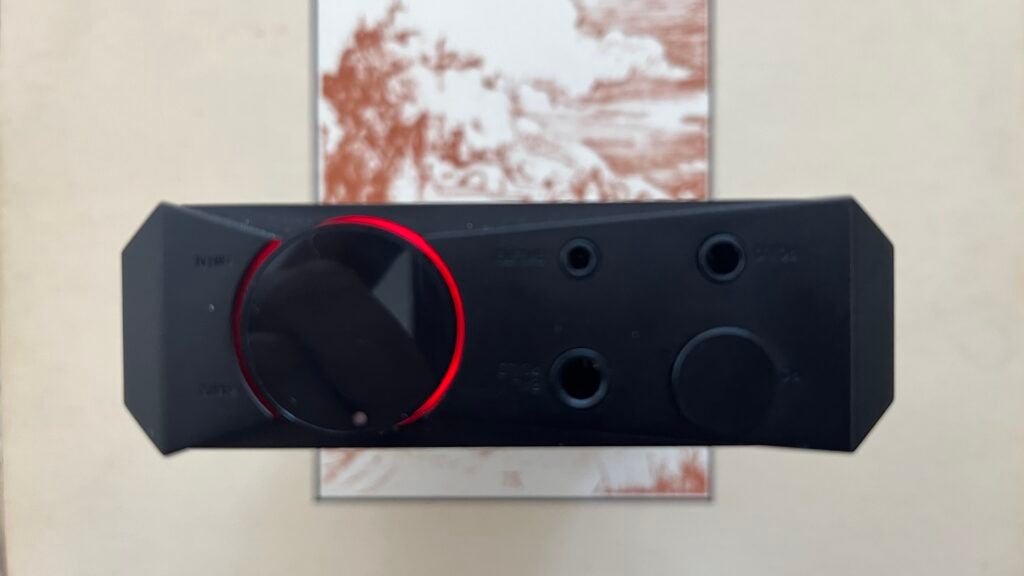
Along the bottom, you’ll find an input for a 12V mains power supply, an RCA socket that functions as a digital coaxial in- or output, and two USB-C sockets: one is a 3.0 port used for power and file transfer, while the other is a 2.0 that allows external DACs or hard-drive storage to be connected (the M17’s internal storage is 64GB, of which around 46GB is available to the user). There’s also a microSD slot here, which can support cards of up to 2TB.
The right-hand side features physical skip forwards, play/pause, skip backwards and favourite buttons (all covered by the leather case but operable nevertheless). There’s also a hold slider and some rather ostentatious lights announcing that the M17 is powered up and working. Meanwhile, over on the left, you’ll find power on/off, volume up and down buttons. Again, they’re covered by the case but easy enough to use regardless. That bold lighting is duplicated here, too. And there’s a slider to switch between direct current and battery power.
When the M17 is attached to the mains, the battery is disconnected from the audio circuit. The M17 can deliver greater sustained power when using mains power, which means even the most truculent headphones can be driven without a problem. It doesn’t charge the battery, though – that’s only possible via the USB-C port. Using battery power gives four levels of amplifier gain, one of which should be suitable for driving all but the most problematic headphones.
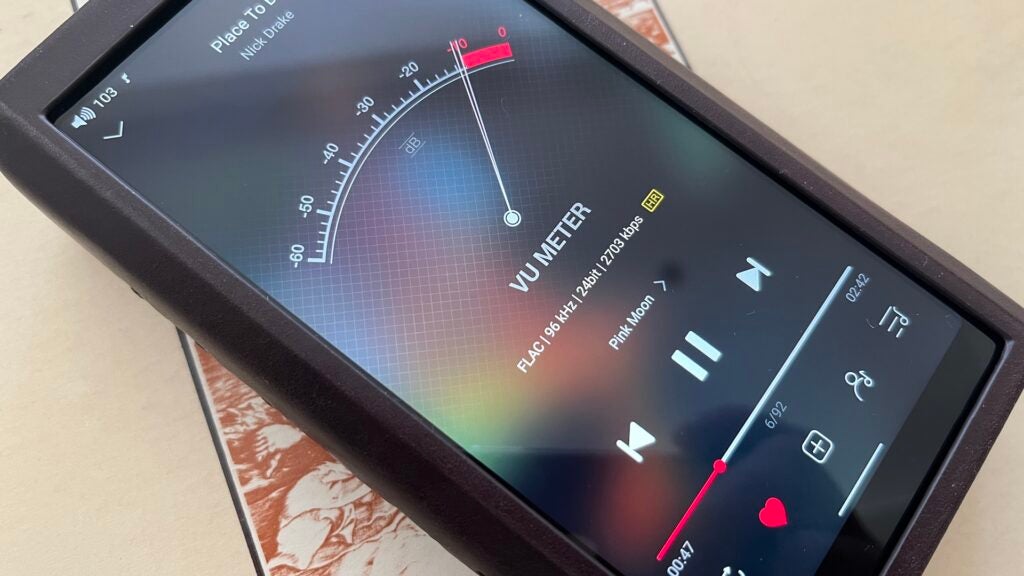
Wireless connectivity is via Bluetooth 5.0, and the M17 is bidirectional, so it can receive or transmit digital audio files via Bluetooth using SBC, AAC, aptX HD, aptX Adaptive or LDAC codecs.
In addition to acting simply as a source of music, the FiiO can also serve as an external DAC or amplifier using its USB-C or digital coaxial sockets. As far as digital-to-analogue conversion goes, the M17 uses an eight-channel ESS Sabre ES9038PRO DAC chip for every stereo channel. This means each audio channel has eight parallel outputs striving to deliver low distortion and high fidelity.
For amplification, FiiO collaborated with THX on a refinement of the latter’s AAA-788 op-amp – and the result is AAA-788+, an upgraded version with greater output and lower output impedance. This sort of hefty power output generates a fair bit of heat, though – so the M17 ships with the FiiO DK3 fan-equipped dock. If you use your M17 as a desktop amp, you can stand it on the dock and allow the USB-C-driven two-speed fan to dissipate the heat the player generates.
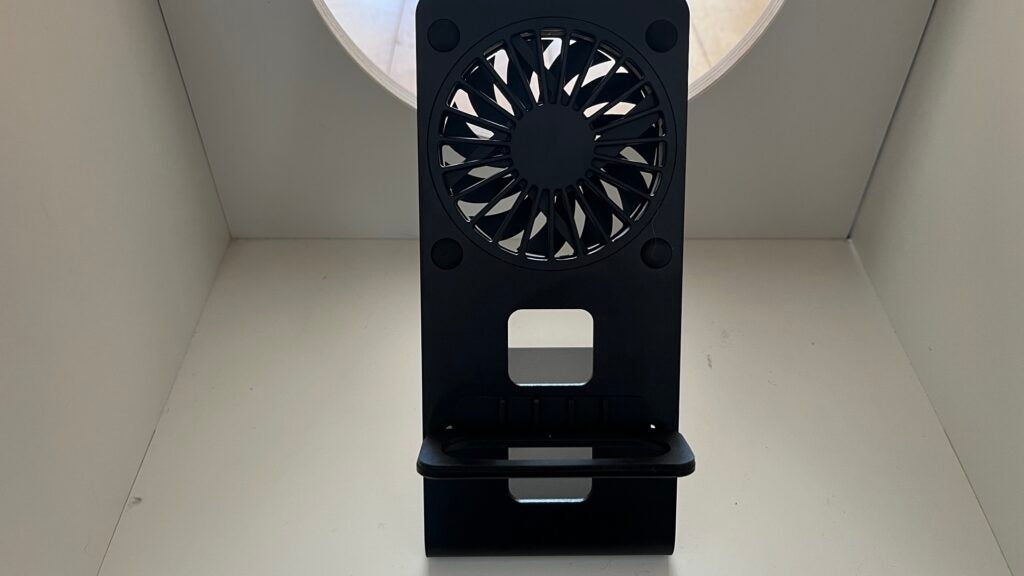
As far as resolution is concerned, the digital coaxial is limited to DSD64 and 24bit/192kHz when used as an input, and DSD128 and 24bit/384kHz when used as an output. It doesn’t support MQA in either direction. The USB-C, meanwhile, goes as far as DSD512, 32bit/7678kHz and full (8x) MQA.
These, of course, are just specification headlines. FiiO has gone to remarkable lengths in a drive for optimal performance. From 17 PCBs with gold immersion finish, and the separation of digital and analogue sections on separate boards to minimise interference, to using seven high-conductivity copper alloy shields to reduce electromagnetic interference, and a whacking great 9200mAh battery that’s good for between eight and 10 hours of playback (depending on which headphone output you’re using), the M17 is as uncompromised as they come.
The Android-based interface is clean, comprehensive and, thanks to a well-implemented touchscreen, responsive. FiiO could have been a little more rigorous where proofreading is concerned (try to add an already-favourited song to your list of favourites and you’re greeted with “songs has exsist [sic] in favorites”). But, in general terms, the user interface here is well realised.
Sound Quality
- Dynamic and punchy
- Remarkable detail resolution
- Unfussy about file size or type
Try as you might, it seems difficult in the extreme to make the FiiO M17 sound anything less than an accomplished music player. Use it as a source of music, or as a DAC to deal with digital audio stored elsewhere, ask it to play 128kbps poverty-spec files from Bandcamp.com or DSD files running 1bit/2822.4kHz (5644kbps) – it’s all the same to the M17. In any and every circumstance, it’s never less than thoroughly enjoyable to listen to.
Naturally, it does its best work when given some half-decent stuff to work with. Plug in a pair of Sennheiser’s IE 900 in-ear monitors via their balanced TRRRS 4.4mm cable, fire up a 2.8MHz DSD file of Stevie Wonder’s Innervisions and the FiiO will let you know exactly what it’s capable of – which turns out to be plenty.

The impression of space and position it creates – and the soundstage on which it creates it – is explicit. It travels from the bottom of the frequency range (where it’s punchy and controlled, detailed and convincingly shaped) to the top (where it attacks with crisp purpose, never letting bite turn into hardness) completely smoothly.
In the midrange, it allows voices to communicate eloquently – the vocal in the Stevie Wonder recordings is pushed well forward, but it’s controlled and integrated with real assurance. Detail levels are sky-high, dynamic headroom is seemingly limitless, and the M17’s ability to identify and integrate transients with just the right amount of weighting is very gratifying too.

It’s hard-hitting when the material demands it but also just as capable of bringing intimacy to a Nick Drake voice-and-guitar FLAC file. Its tonality is convincingly musical, and its ability to peer deep into a mix and return with information regarding the most minor harmonic variations is impressive.
The M17 displays winning rhythmic positivity, welcomes neutrality where recording quality is concerned and at no point confuses drive with relentlessness. Naturally, a 128kbps file of Junior Dell & The D-Lites rollicking version of I’m A Man goes without a degree of subtlety, just as switching headphones to the rather trickier-to-drive Audeze LCD-X planar magnetic over-ears results in a need to up the FiiO’s gain. But in either case, the broad strokes of the way the M17 performs are unaltered: it’s always a musical, engaging and energetic listen.
Latest deals
Should you buy it?
You want a device to form the engine of both a portable and a desktop system: The M17’s prodigious list of talents includes the physical as well as the sonic.
You’re expecting a pain-free portable experience: This is not, I repeat not, a slip-into-your-jacket-pocket device.
Final Thoughts
The hurdles you need to clear are considerable – this is an expensive device, after all, and far from the most portable digital audio players around. But if you have the wherewithal (and a sturdy bag in which to carry it), the FiiO M17 has an awful lot to recommend it. In short, there is more than one brand that can lead you to part with a lot of money for an exquisite (portable-ish) digital audio experience.
How we test
We test every portable music player we review thoroughly over an extended period of time. We use industry standard tests to compare features properly. We’ll always tell you what we find. We never, ever, accept money to review a product.
Find out more about how we test in our ethics policy.
Tested for more than a week
Tested with real world use
Tested with multiple headphones
FAQs
The M17 supports micro-SD cards up to 2TB.
Full specs
Sustainability
Trusted Reviews’ holds the fact that global warming is not a myth as a core value and will continuously endeavour to help protect our planet from harm in its business practices.
As part of this mission, whenever we review a product we send the company a series of questions to help us gauge and make transparent the impact the device has on the environment.
We currently haven’t received answers to the questions on this product, but will update this page the moment we do. You can see a detailed breakdown of the questions we ask and why in our sustainability info page.
Jargon buster
Hi-Res Audio
Hi-Res audio is referred to as a standard as well as a marketing term that describes digital audio files of better-than-CD quality (16-bit/44.1kHz).


